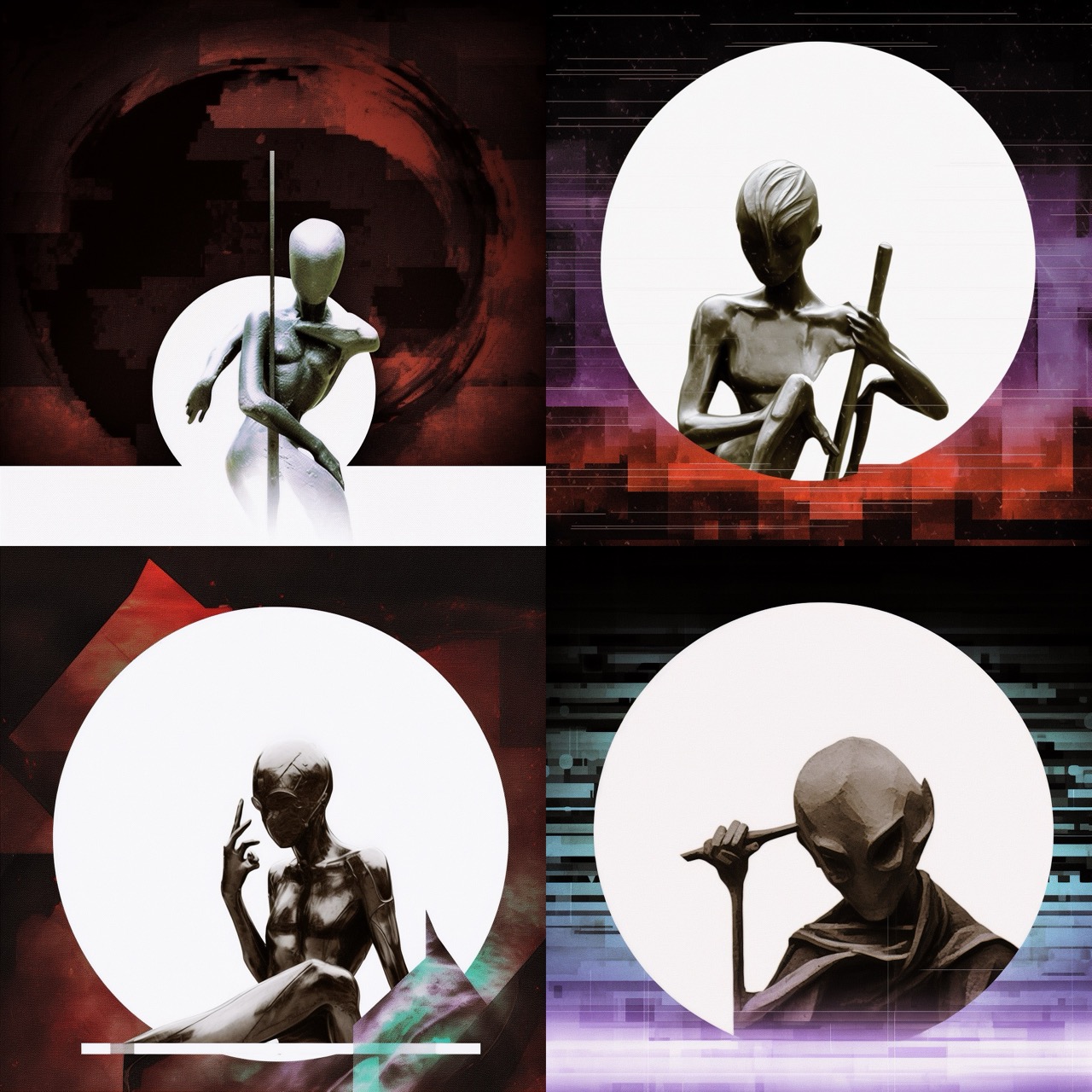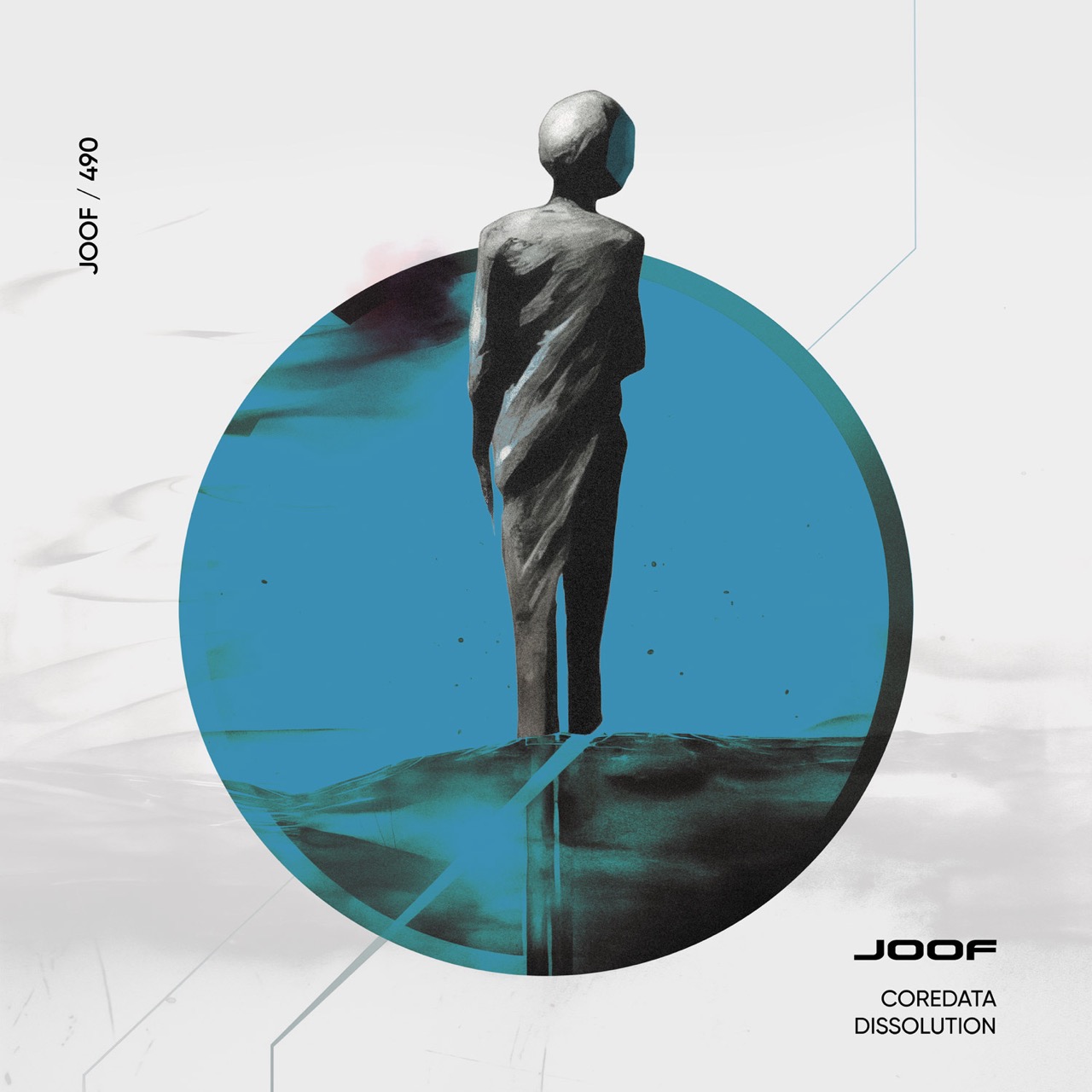Designing label cover artwork series using AI: my step-by-step experience
In this blog post, I’ll share my experience using AI image generators to create release cover artwork for JOOF Recordings, a UK record label run by John 00 Fleming. I was approached by a JOOF manager with the task of creating a new artwork design by continuing the theme of the current covers. Unlike using dramatic changes and coming up with something entirely different, the challenge was to provide a fresh look while maintaining the previous style. The initial covers were hand-drawn by an illustrator, which was time-consuming and expensive. So, I proposed using AI as a cost-effective and quicker alternative.

I compared three AI image generators: Midjourney, Leonardo, and DALL·E. I chose Midjourney for its alignment with my project needs.
For those of you not familiar with Midjourney, let me quickly explain what it is. In a nutshell, Midjourney is a chatbot hosted on Discord servers, and you can operate it using chat commands called “prompts”. One of such prompts, for example, is “/imagine”, which makes Midjourney create an image based on the input parameters.
The process started with me uploading the original covers as references into Midjourney. My first attempt involved simply generating similar images. However, the results were far from what I expected:



I began with the original prompts but soon realized that a white background would make my task easier. The results, however, turned out quite different from the initial step:


I asked the bot to describe one of the original covers and generated images based on those descriptions:

The results varied widely:




I uploaded another cover for description and generated images with the new prompts:

But again, the outcomes were not as expected:




And I repeated the process with a third cover:

But the results still missed the mark:




Then I returned to the first prompt but excluded the colour pink and added “charcoal drawing” to the prompt, followed by “charcoal style, minimal, no faces, girl, man”:




I also tried “charcoal style, minimal, flat,” which brought back faces:

So I added “no faces” again:

And I included words like “silhouettes” and “abstract” in the prompt:


However, the silhouettes became too human-like, so I added “alien flat silhouette”:

Changing the order of words in the prompt influences the results: “charcoal style, minimal, alien flat silhouette, no faces” → “minimal, charcoal, abstract, alien flat silhouettes, no faces”. And the results are getting closer and closer to the desired ones:

I switched from “flat” to “blurred”:

And continued to tweak the prompt, which now looks like “link_image_1 link_image_2 link_image_3 link_image_4 minimalist, charcoal, abstract, alien blurred silhouette, flat, no faces”. Here are some of the covers in the links. I added the image weight parameter to the prompt to make the covers have more influence on the result and I got this:


I adjusted the influence of the original covers in the prompt and experimented with different parameters like “weird” with values of 2000 and 3000:


And added words like “dust” and “scratches”:


I replaced “alien” with “ghost” and generated more variants with the latest prompt:


Also I introduced the “chaos” parameter with varying values, leading to a range of intriguing images:









Some images caught my attention, so I generated variations and added “no faces, hands, legs” to the prompt:






Then I upscaled the most suitable images for further work:

Finally, I took these generated images into Photoshop to unify their style and appearance. The end result was a series of unique and stylistically consistent album covers, all created with the aid of AI technology:










The client at JOOF loved the result so much so then they asked me to make a refresh artwork for their sub-label too called JOOF Aura.

With these design I went through pretty much the same process, so let fast-forward you to the final result:










My opinion about AI is that the future lies in this technology. However, it’s important to note that it’s not as simple as generating designs with a single click. It involves a substantial amount of work. Even for this artwork, it took me many hours across multiple days to control the visual output guided by my vision, master the prompts and get the result done right. Which is surely faster if I were drawing this by hand, but still not as easy as it might seem when someone hears the words “AI” being involved.
I believe that designers who master this technology will undoubtedly have an edge in the future. AI doesn’t just replace hours of manual labour; it becomes an invaluable tool in a designer’s arsenal. The era of relying solely on Photoshop is evolving into one where AI complements Photoshop.
Nevertheless, it’s crucial to understand that professional skills are still required to effectively use these tools. A manager, for instance, can’t just generate the needed images without a background in design and a trained eye. The role of the designer is not diminished but enhanced, requiring a blend of artistic sense and technical know-how to harness the full potential of AI in creative design.



